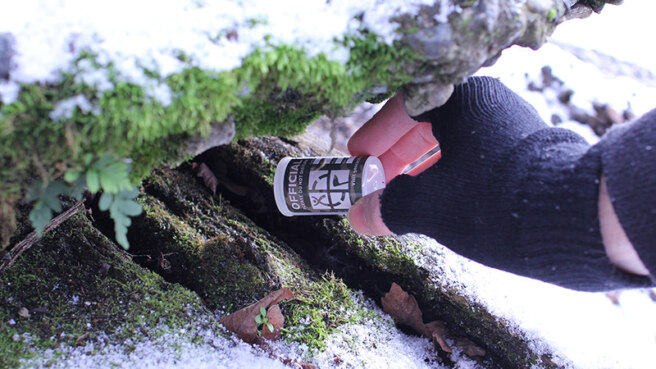For those in the Northern Hemisphere, the chilly months are in full swing. While you might be busy cozying up, let’s not forget about that sweet cache you hid back in July. Yes, it was really cool, but how airtight was your maintenance plan? Are you ready for the elements? Is your geocache?!
Find out with these five quick tips for winter-proofing your hide:
Tip 1: Waterproof, waterproof, waterproof
Snow is pretty, but we all know it’s really just water in disguise. Come spring, all those fluffy flakes could turn your GZ into an absolute swamp. So, before it’s too late, make sure your container won’t let any of that unwanted H2O inside. Replace the container if need be! As an extra precaution, pick up some waterproof paper and pens.
Tip 2: Gimme shelter
Sometimes, a set of coordinates offers multiple hiding spots for a geocache. For example, if your cache rests at the base of a tree on the forest floor, consider moving it up onto a branch or in a hollow. This maneuver adds an extra layer of protection against ice, snow, sleet, and whatever else might try to get inside your cache. To give your geocache shelter is to give your geocache love.

Tip 3: Layer up
The outdoors can be unpredictable, even if you pick up an industrial-grade waterproof container. Just like wearing a coat over a sweater, your geocache might also appreciate an additional layer. It might be time to bundle up and double up; consider adding a container within a container… ‘cache-ception,’ if you will. A plastic Tupperware inside of an ammo canister is just one example.
Tip 4: Batten down the hatches
Not only does the wintertime bring snow, but it can also bring some fierce winds. In the milder months, this may not be a huge issue… but some geocaches are prone to blowing away! If the location allows, consider adding a lock, chain, or magnet mechanism to secure the precious cache in place. It would be a real shame if your geocache got lost in the cold!

Tip 5: Disable the cache page
Depending on the location of your cache, it might be completely inaccessible in the winter months. In this case, it’s best practice to disable the cache page until conditions improve. This way, no one will waste time and effort attempting to find the geocache. If you’re worried about damage to the cache, take some time to retrieve the container and bring it into the great indoors. Your geocache will thank you.
We hope these tips help you (and your geocache) get through these dark and cold months. If all goes well, your cache will stand victorious come springtime and be ready for the next finder. Think spring, geocachers, and remember: if you’re cold, they’re cold.
Source: Geocaching
